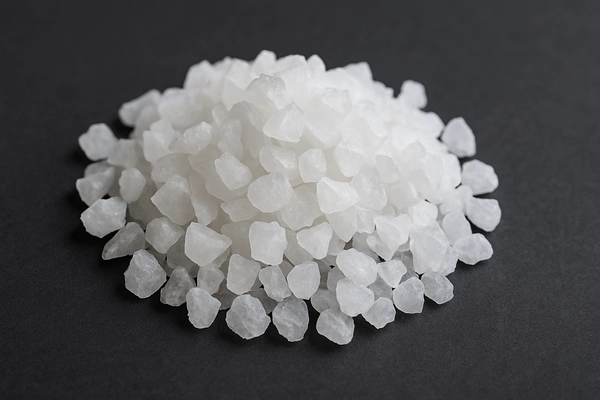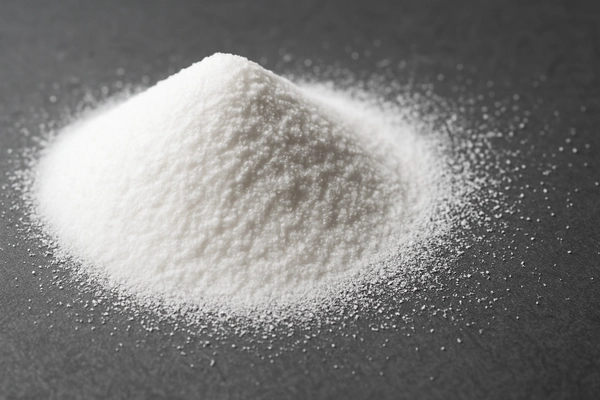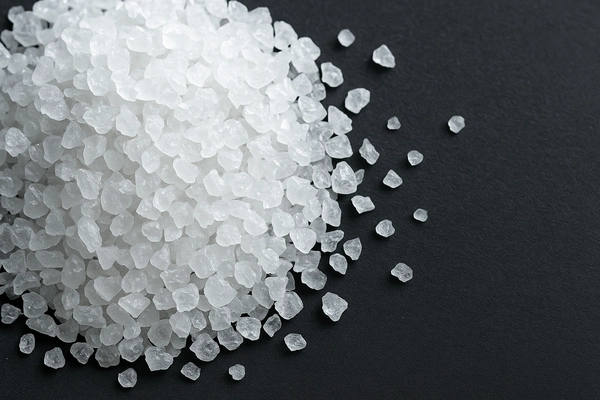Key Properties of White Fused Alumina
White fused alumina (WFA) is a high-purity synthetic abrasive made from calcined alumina. Known for its exceptional hardness and chemical stability, WFA is widely used in precision grinding, cutting, and polishing applications. Its physical and performance characteristics make it a preferred material for demanding industrial operations.
- High Hardness: With a Mohs hardness of 9, WFA ranks among the hardest industrial materials, offering superior cutting and grinding ability even on hard substrates.
- High Strength & Toughness: WFA exhibits excellent mechanical strength and abrasion resistance, making it suitable for heavy-duty and high-speed grinding processes.
- Excellent Thermal Resistance: Its high melting point and thermal stability allow WFA to maintain consistent performance in high-temperature machining and processing environments.
- Chemical Inertness: WFA resists oxidation, acids, and alkalis, ensuring reliable use in chemically aggressive settings such as electronics, pharmaceuticals, and chemicals.
- Uniform Particle Size: The material offers a narrow particle size distribution, which can be customized for coarse or fine processing requirements, delivering consistent surface finishes.
- High Grinding Efficiency: Its combination of hardness and sharp edges enables efficient material removal, improving process throughput and reducing machining time.
With these properties, white fused alumina is ideal for applications in metalworking, glass processing, stone cutting, and advanced material finishing where purity and performance are critical.
Manufacturing Process of White Fused Alumina
White fused alumina (WFA) is produced from selected calcined alumina materials through electric arc furnace smelting at extremely high temperatures. The process ensures the formation of pure, hard, and thermally stable corundum crystals suitable for abrasive and refractory applications. The main production stages include:
- Raw Material Selection: High-purity alumina, typically derived from bauxite or synthetic sources, is selected based on strict quality standards to ensure chemical purity and performance consistency.
- Crushing & Sieving: The raw materials are crushed into suitable size ranges and sieved to ensure proper particle size distribution for uniform melting.
- Mixing & Homogenization: Various fractions of alumina are carefully proportioned and mixed to achieve the required specifications and uniformity for melting.
- Electric Arc Furnace Smelting: The blended materials are smelted in a tilting arc furnace at temperatures exceeding 2000°C. This process forms large fused alumina blocks composed of dense α-Al2O3 crystals.
- Cooling & Solidification: After smelting, the molten alumina is slowly cooled to form solid blocks, ensuring internal crystallization and mechanical strength.
- Crushing & Shaping: The cooled blocks are broken down into desired grit sizes using crushers and shaping equipment to ensure blocky, angular particles.
- Magnetic Separation: To remove any residual iron or magnetic impurities, the material is magnetically cleaned.
- Grading & Classification: The material is sieved and classified into standard FEPA grit sizes or customized fractions for different industrial applications.
- Surface Finishing (Optional): For specific high-end applications, polishing or surface conditioning may be performed to enhance brightness and smoothness.
- Quality Inspection & Packaging: Final products undergo rigorous chemical and physical testing before being packed according to client specifications.
This controlled production process ensures white fused alumina meets the demanding requirements of abrasive, refractory, and technical ceramic industries worldwide.
White Fused Alumina Product Types
White fused alumina is available in a wide range of grit sizes and forms to meet the requirements of various industries, from surface finishing to high-temperature refractories. Below are the major WFA product types:

WFA Fine Grit (F60–F120)
Ideal for surface preparation and precision grinding of stainless steel, glass, and non-ferrous metals. Offers high cutting power with minimal contamination risk.
View Details
WFA Micro Powder (F150–F1200)
Designed for polishing, lapping, and ultra-fine surface finishing in electronics, ceramics, and optical components. Ensures purity and consistency in demanding applications.
View Details
White Fused Alumina
High-quality White Fused Alumina (WFA) abrasive powder for polishing, sandblasting, and refractory applications. Premium aluminum oxide with exceptional purity and performance.
View DetailsIndustries and Applications of White Fused Alumina
Thanks to its high purity, exceptional hardness, and chemical stability, white fused alumina is widely used in industries that demand contamination-free processing and high-performance materials. Below are the key sectors and typical applications of WFA:
Abrasive Tools
Used in grinding wheels, polishing compounds, and coated abrasives for fine finishing of stainless steel, high-alloy steels, and non-ferrous metals. Preferred where iron contamination must be avoided.
Surface Preparation
WFA is commonly used in sandblasting for glass etching, aluminum surface texturing, and cosmetic defect removal, providing uniform finish with minimal embedding or residue.
Refractory Materials
Serves as a key component in refractory bricks, castables, and insulating materials for high-temperature furnaces and kilns, especially where purity and thermal shock resistance are critical.
Electronics & Technical Ceramics
WFA micro powders are used in substrates, spark plugs, insulators, and semiconductor packaging due to their insulation strength and abrasive control in ultra-fine polishing processes.
White Fused Alumina: Grain Size & Chemical Composition
Below are detailed specifications of our white fused alumina across different grit ranges, including typical chemical composition values and compliance with Chinese GB standards.
WFA Abrasive Grits (#4–#220)
| Grain Size | Component | GB Requirement | Typical Value |
|---|---|---|---|
| #4 – #80 | Al2O3 | ≥ 99.10% | 99.65% |
| Na2O | ≤ 0.35% | 0.22% | |
| Fe2O3 | – | 0.03% | |
| SiO2 | – | 0.03% | |
| #90 – #150 | Al2O3 | ≥ 99.10% | 99.35% |
| Na2O | ≤ 0.40% | 0.30% | |
| Fe2O3 | – | 0.04% | |
| SiO2 | – | 0.05% | |
| #180 – #220 | Al2O3 | ≥ 98.60% | 99.20% |
| Na2O | ≤ 0.50% | 0.36% | |
| Fe2O3 | – | 0.05% | |
| SiO2 | – | 0.08% |
WFA Grits (180#–0 to 8–12mm)
| Size | Al2O3 | Magnetic (%) | SiO2 (%) |
|---|---|---|---|
| 180#-0 | ≥ 99.0% | ≤ 0.40% | ≤ 0.10% |
| 200#-0 | ≥ 99.0% | ≤ 0.40% | ≤ 0.10% |
| 320#-0 | ≥ 99.0% | ≤ 0.40% | ≤ 0.10% |
| 0–1 mm | ≥ 99.0% | ≤ 0.40% | ≤ 0.10% |
| 1–3 mm | ≥ 99.0% | ≤ 0.40% | ≤ 0.10% |
| 3–5 mm | ≥ 99.0% | ≤ 0.40% | ≤ 0.10% |
| 5–8 mm | ≥ 99.0% | ≤ 0.40% | ≤ 0.10% |
| 8–12 mm | ≥ 99.0% | ≤ 0.40% | ≤ 0.10% |